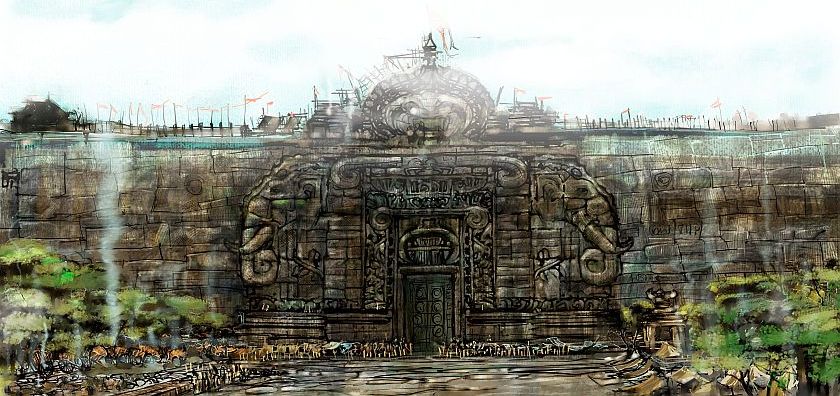Kurukshetra is the place where the epic Mahabharata war fought for 18 days, more than 5000 years ago.
Bhagavadgeetha describes Kurukshetra as ‘Dharmakshetra‘ – a place where ‘Dharma‘ is restored.
The location of the battle was Kurukshetra in the modern state of Haryana in India.
The battle was fought for throne of Hastinapur, which is now located between Meerut and Mawana in uttar Pradesh and is now a forgotten village, but excavations in 1952, revealed the existence of vidurka – tilla (vidura’s palace), Draupadi – ki – rasoi (Draupadi’s Kitchen) and Draupadi Ghat, along with copper utensils, iron seals, Ornaments made of gold and silver, terracotta discs and several oblong shaped ivory dice used in the game of chauper (ancient game in which Duryodhana, with help of his maternal uncle Sakuni, defeated Yudhishtir and sent his brothers along with Draupadi to forest exile for 13 years).

Hastinapur’s Sankrit name suggests that it embodies the might of elephants (Hasti = Elephant).
Hastinapur is styled around the elephant motif, a fortified, heavy ominous dark stoned capital.
In archaeological excavations around hastinapur, about 135 iron objects which included arrow and spearheads, shafts, tongs, hooks, axes, and knives were found, which indicate the existence of a vigorous iron industry.
There are indications of brick – lined roads and drainage systems, and an agro – livestock based economy. The painted grey ware (PGW) of Hastinapura has been assigned to 2800 BCE and beyond.
Based on astronomy of Saptarishi Mandal (they align in same nakshatra/constellation every 100 years), kurukshetra war dates back to 3138 BCE.
Ancient Indian Almanacs (Panchangs) have been mentioning Salivahana Saka and Vikramarka Saka(calendar) and also mention the year Jaya Nama Samvatsara (2014-15) as Kaliyuga’s 5116.
So, its been 5115 years since the death of Lord Krishna and if we subtract 2014 from it, its 3101 BCE when Krishna left this planet and 36 years prior to that, Kurukshetra war was fought.
These calculations are based on mentionings in Mahabharata.
Krishna was 90 years old during war time and his life ended at the age of 126 years.
Yudhishtir and Bheema were elder than Krishna, Arjuna was of same age, Nakul and Sahadev were younger.
This is mentioned in a scene where Pandavas are about to leave for forest exile, Krishna bows to Elder two brothers, hugs middle brother Arjuna and blesses the younger two.
According to the Matsya and vayu puranas a heavy flood on the river Ganga destroyed Hastinapur and Nichakshu, the fifth king after parikshit (Arjuna’s grand son) who ascended the throne after kurukshetra war, shifted his capital to kausambi, 50 kilomters from prayagraj.
Evidence of devastation by the Ganga is still visible in the thick clay soil.
Excavations in Kurukshetra, now in Haryana, yielded iron arrow and spearheads dated by Thermoluminence Test to 3100 BCE.
Sage Veda Vyas also mentions in Mahabharata about usage of atomic weapons from both sides killing millions of soldiers and kings within 18 days.
Present excavations at kurukshetra find that the stones at that place were exposed to radioactive energy thousands of years ago.
The site of drowned Dwaraka near Gujarat’s seashore (at present Dwaraka) also has artifacts dating back to 4000-5000 years old.
